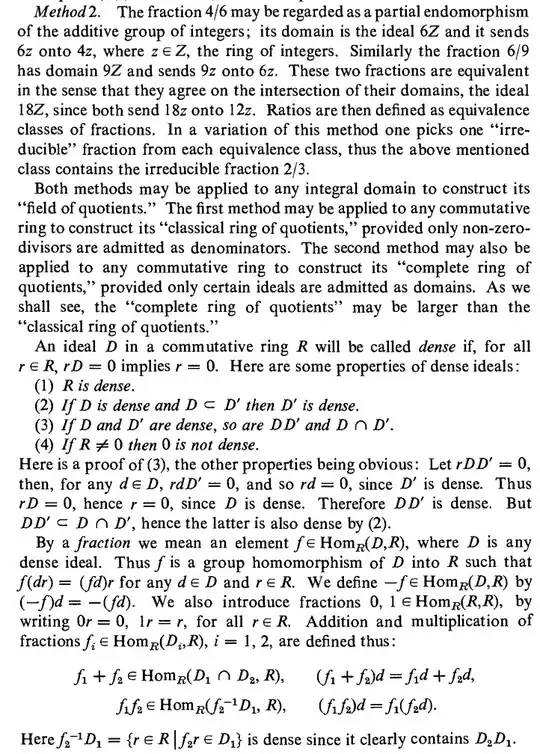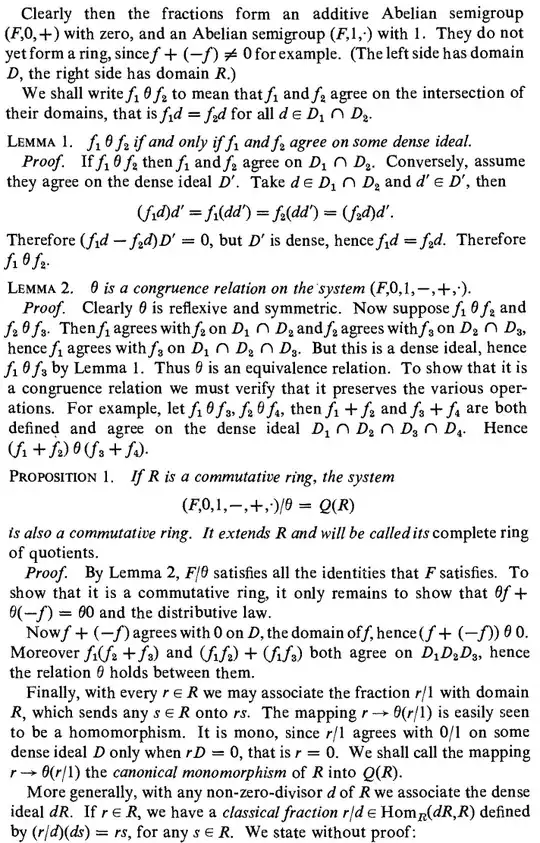A conventional wisdom of building $\mathbb{Q}$ from $\mathbb{Z}$ is the construction of the Field of Quotients of the Integral Domain. Are there alternatives?
For example, can the $\mathbb{Q}$ be described as a Quotient Ring: $\mathbb{Z}[x,y]/\langle xy-1 \rangle$? I struggle to exhibit an isomorphism of this ring into $\mathbb{Q}$.
Reflecting onto the standard construction of the Field of Quotients
$\mathbb{Z} \oplus \mathbb{Z} / \{ (a,b) \sim (c,d) \mid ad = bc \} $
it prompts that perhaps we need to construct a projective variety out of $\mathbb{Z} \oplus \mathbb{Z}$ (if there is such a thing), and work with homogeneous polynomials?
In general, given the 2 ring building operations: direct sum, and making a polynomial ring, is there a ring $R(\mathbb{Z})$, e.g.
$ (\mathbb{Z} \oplus \mathbb{Z})[x,y,z] \oplus (\mathbb{Z} \oplus \mathbb{Z} \oplus \mathbb{Z})[x,t] $
and an ideal $I \subset R(\mathbb{Z})$ such that $ R(\mathbb{Z})/I$ is isomorphic to $\mathbb{Q}$?


